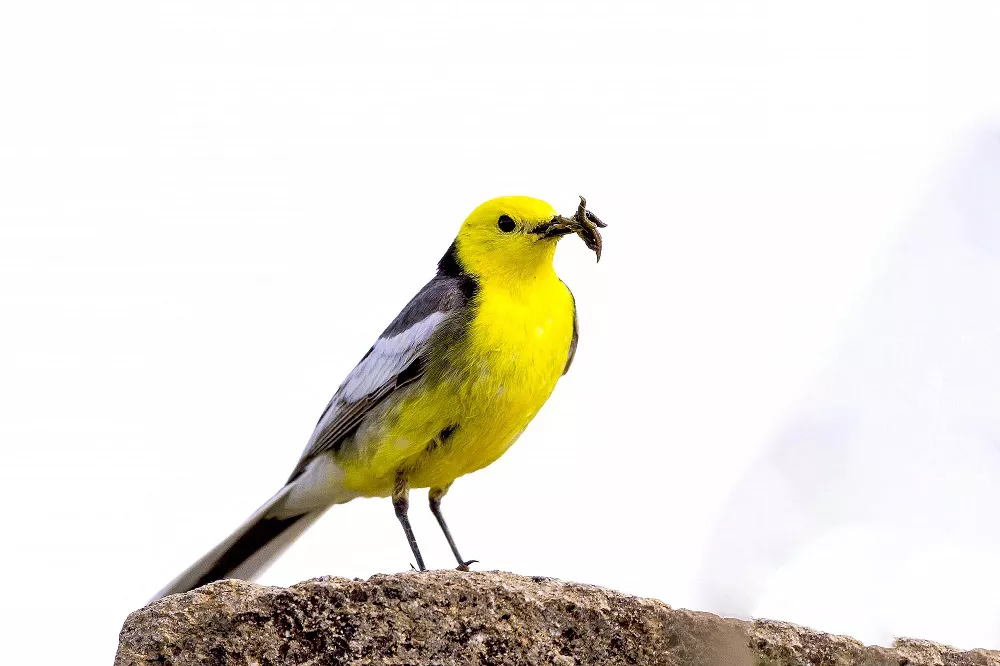Within the avian world, wagtails captivate birdwatchers with their lively movements and vibrant plumage. Among the various species, the Yellow Wagtail (Motacilla flava) and the Citrine Wagtail (Motacilla citreola) are often subject to confusion due to their similar appearance. In this article, we delve into the distinct characteristics and behavioral traits that differentiate these two wagtail species, shedding light on their subtle yet significant dissimilarities.
Physical Appearance:
Yellow Wagtail: The Yellow Wagtail displays a striking combination of yellow and green plumage. Adult males typically have bright yellow undersides, olive-green backs, and grayish heads. They possess a distinct dark stripe running from the eye to the nape of the neck. Females and juveniles exhibit a more subdued coloration, with pale yellow or buffy undersides and less vibrant plumage overall.
Citrine Wagtail: The Citrine Wagtail, on the other hand, exhibits a predominantly yellow plumage, with shades ranging from pale lemon yellow to bright canary yellow. Adult males possess a yellow face, throat, and underparts, and a pale gray or pale greenish back. The dark stripe seen in Yellow Wagtails is absent in Citrine Wagtails. Females and juveniles resemble adult males but may have slightly duller plumage.
Habitat Preferences:
Yellow Wagtail: The Yellow Wagtail is primarily associated with wetland habitats, including marshes, wet meadows, and riversides. They are often found in agricultural areas, such as fields and pastures, where they forage for insects and other invertebrates. They prefer open areas with vegetation cover and access to water sources.
Citrine Wagtail: The Citrine Wagtail, while sharing some habitat preferences with the Yellow Wagtail, tends to favor more open habitats. They are commonly found in grasslands, steppe regions, and open wetlands, including flooded fields and shallow ponds. Citrine Wagtails have a particular affinity for areas with short vegetation, where they can more easily spot their prey.
Migration Patterns:
Yellow Wagtail: Yellow Wagtails are migratory birds, breeding in Europe and Asia during the summer months and undertaking extensive migrations to sub-Saharan Africa for the winter. They are known for their remarkable long-distance journeys, often covering thousands of kilometers during their annual migrations.
Citrine Wagtail: Like the Yellow Wagtail, the Citrine Wagtail is also a migratory species. They breed in the northern parts of Europe and Asia, particularly in Siberia, and migrate to wintering grounds in India and Southeast Asia. Their migration routes differ from those of Yellow Wagtails, reflecting their distinct breeding and wintering ranges.
Vocalizations:
Yellow Wagtail: The Yellow Wagtail’s vocalizations consist of a melodious and lively song characterized by a series of whistles and trills. Males often sing during courtship displays and territorial defense. Their calls are typically high-pitched and sharp, serving as contact calls between individuals.
Citrine Wagtail: Citrine Wagtails have a simpler and less varied song compared to Yellow Wagtails. Their vocalizations consist of short, monotonous calls, often described as a repetitive “tsee” or “tsip” sound. These calls serve for communication purposes among individuals.
Conservation Status:
Yellow Wagtail: The conservation status of the Yellow Wagtail varies among different populations and subspecies. While some populations are considered stable, others face threats due to habitat loss, agricultural intensification, and changes in land use practices. Certain subspecies of Yellow Wagtails are listed as Near Threatened or Vulnerable.
Citrine Wagtail: The Citrine Wagtail is generally considered to have a stable population. However, like the Yellow Wagtail, it faces habitat degradation and loss due to agricultural practices and infrastructure development. Proper habitat management and conservation measures are essential for ensuring the species’ long-term survival.
Conclusion:
Although the Yellow Wagtail and Citrine Wagtail share similar habitats and migration patterns, subtle differences in their physical appearance, vocalizations, and habitat preferences set them apart. Recognizing these distinctions is crucial for accurate identification and understanding their ecological roles. By appreciating and conserving the unique characteristics of these wagtail species, we can contribute to their preservation and ensure their continued presence in the natural landscapes they call home.
Related topics:
- What is Citrine Wagtail?
- What is the Yellow Wagtail?
- What does a Yellow Wagtail look like?
- What does a Yellow Wagtail eat?


 Facebook
Facebook  Instagram
Instagram  Youtube
Youtube 